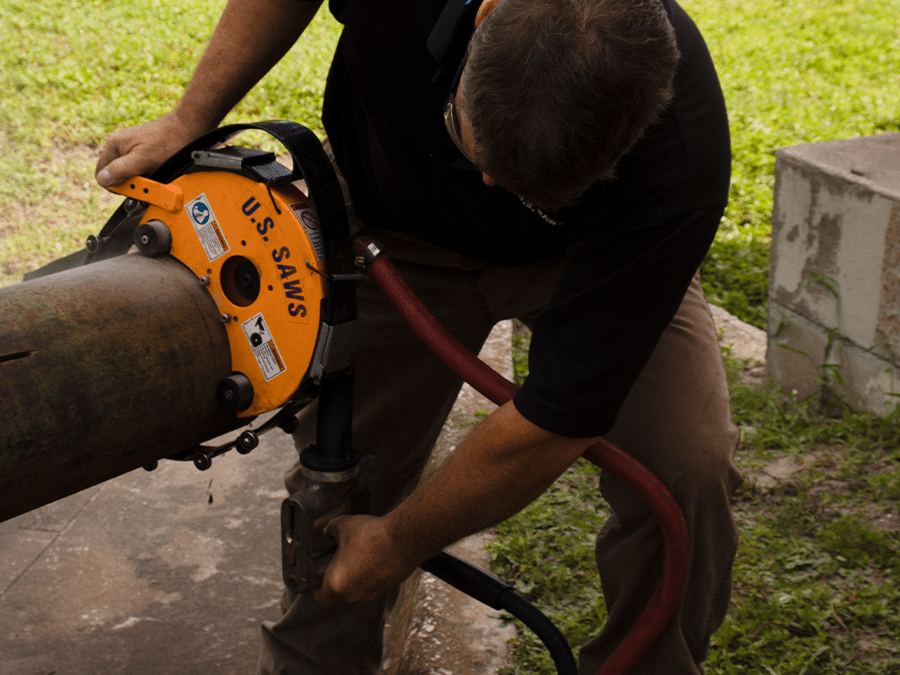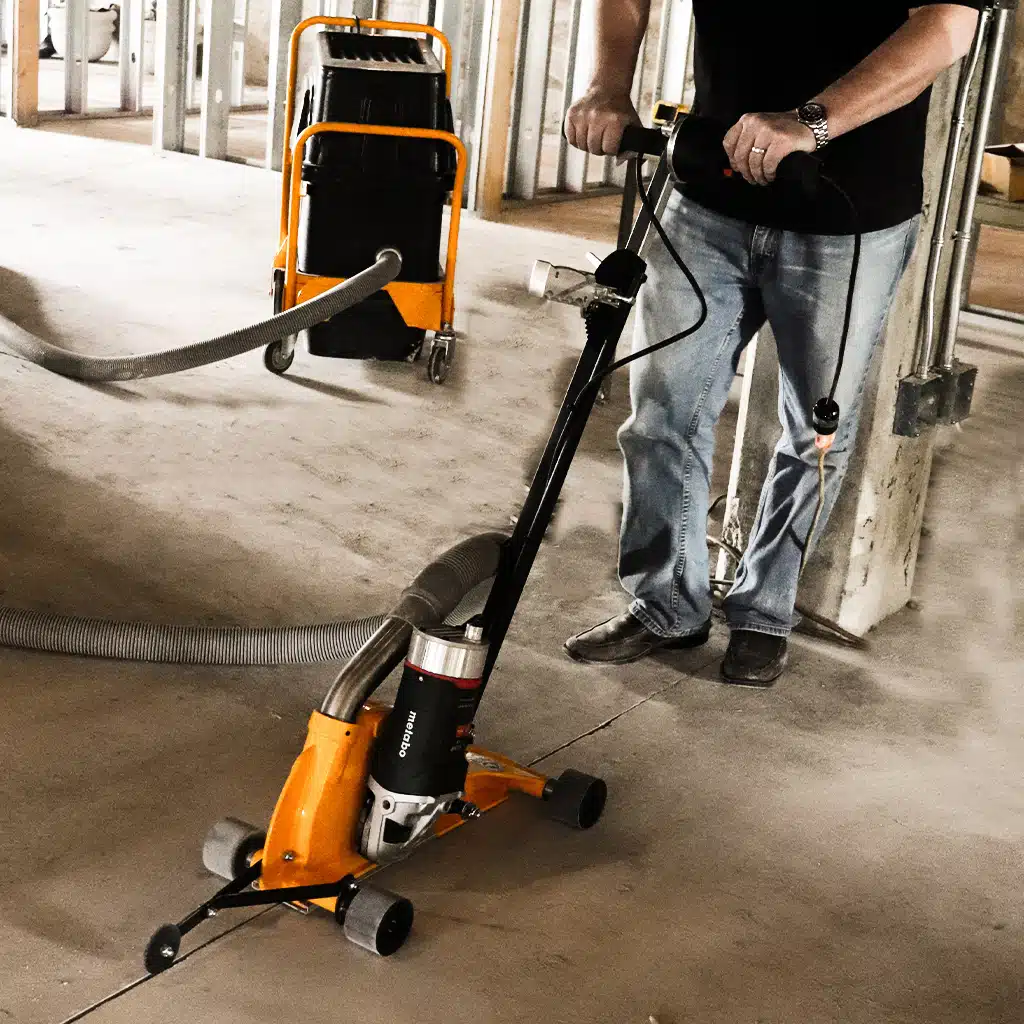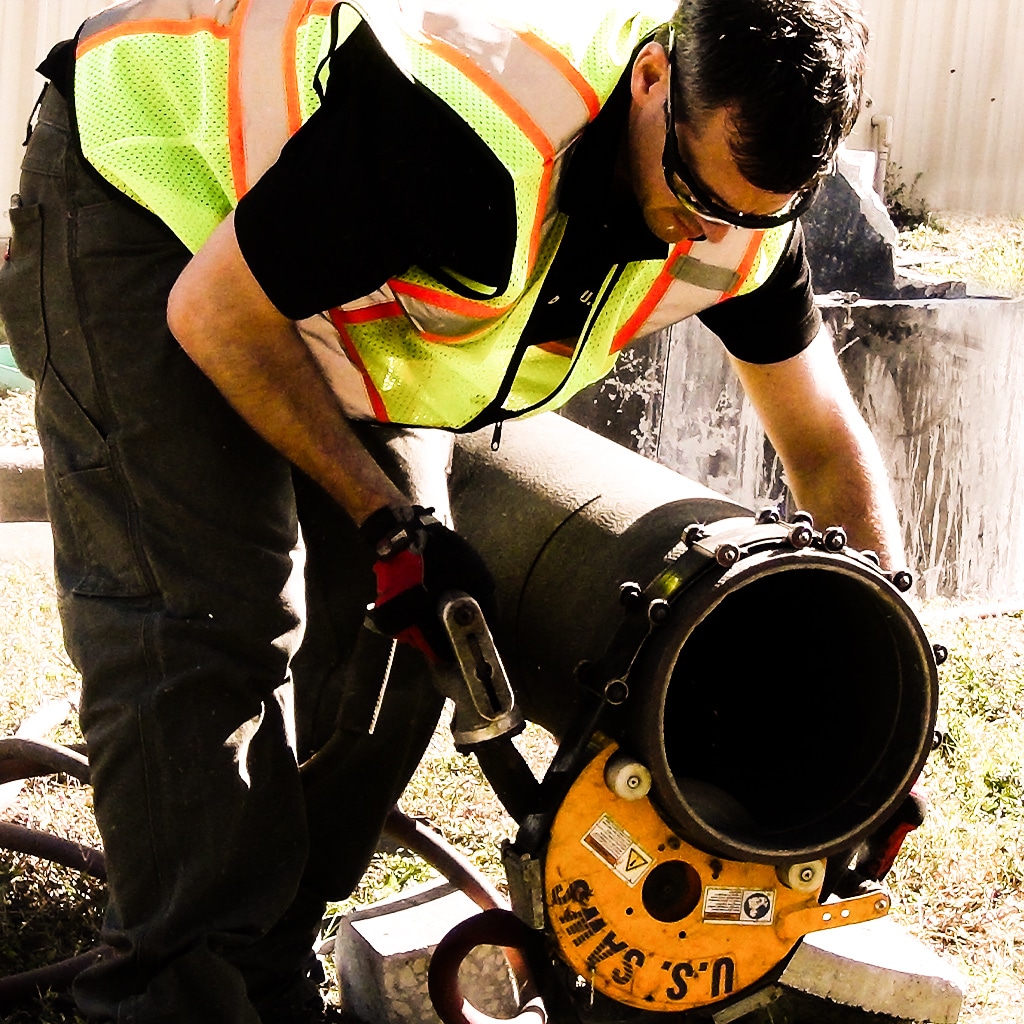As an underground contractor, you know your role in installing and repairing various pipes and cables is vital to an area’s infrastructure. Getting the job done swiftly, efficiently, and correctly is mandatory. In order to get the job done, you need to ensure you have the best underground tools on hand to finish the project. The top five tools for any underground contractor’s toolbox are:
- An air-powered belly saw;
- A chainsaw;
- A cordless pipe beveller;
- A battery-powered valve exerciser; and
- A manhole cover lifter.
Without these tools, an underground contractor’s job becomes a lot harder. Let’s take a closer look at each of these underground tools.
What Is a Belly Saw and How Does it Help?
One underground tool that makes the job easier for underground contractors is the air-powered belly saw. These air-powered belly saws are a great option for contractors who need to cut underground pipes. Belly saws are designed for easy and safe operation in tight spaces. At U.S.SAWS, their belly saws are equipped with Tiger Tooth blades that remain shielded by a clamshell cover until it is time to cut, protecting the user from accidents. The saws work by attaching the saw to the pipe itself using the saw’s strap. The blade is then guided by four spring-loaded wheels to ensure a straight and accurate cut every time. Air-powered belly saws are a great underground tool that will allow you to cut through just about any material, including PVC, HDPE, ductile iron, cast iron. Since these saws are air or hydraulically operated, they not only add the benefit of being exhaust-free, but also are operable in wet conditions. These saws can handle pipes with diameters up to 24 inches and only require 7 inches of clearance.
Chainsaws Built for Pipe Cutting
Air-powered chainsaws are versatile underground tools. There is one for every job. They are safer than gas-powered or electric chainsaws, especially in wet or tight spaces. If you are looking to cut pipe for a demanding job with minimal excavation, an air-powered chainsaw may be the answer for you. These chainsaws come equipped with a pipe clamp to ensure no operator fatigue comes into play with little to no kickback. This pipe claim also allows for safe bottom-up cuts. U.S.SAWS utilizes a PowerGrit chain that can be used to cut ductile iron, HDPE, PVC, cast iron, and the like. They also come with a concrete chain for concrete pipe, reinforced concrete, and concrete structures. Square corners may be cut without overlapping cuts. Also, these chainsaws can cut irregular shapes, making them more adaptable to your needs than the belly saw.
The Cordless Pipe Beveller
A cordless pipe beveller is another must-have underground tool for an underground contractor. This handy item is a quick, easy, and safe way to cut and bevel any plastic pipe. For contractors working with sewer pipes, the cordless pipe bellever is an all-in-one solution. Its small size and battery operation allow it to make easy work of cuts and beveled edges in tight spaces without being tethered to an electrical cord. The cordless pipe beveller is adjustable for all sizes of pipe and is a lightweight solution for work in trenches. Some retailers, like U.S. Saws, offer reasonably priced cordless pipe bevellers that come equipped with a quality DeWalt 20V grinder, 16 flute beveller, two batteries, a charger, and a carrying case.
Battery Powered Valve Exerciser
Valve exercisers are a must-have tool for contractors working with waste and water facilities or municipal water departments. The key to working with waste and water departments is being able to access the worksite and regulate the flow of water, and the valve exerciser is the way to do it. The advent of the battery-operated valve exerciser made the process of opening and closing valves easier on the workers, making access to difficult locations easier with less manual labor. The U.S.SAWS VEX-400 is a perfect example of a solid, portable valve exerciser with the power and safety features needed for successful valve work. These exercisers are made of alloy aluminum and hardened steel which use a Metabo drill motor as their power source. Safety features include a trigger handguard, stable foot base, overload protection, and a shear key that will break before the gearbox, preserving the integrity of the exerciser and its user. This device has a rotation counter that tracks turns rotating in either direction, comes with three batteries for a full day’s work without the need for recharging, and has multiple extensions allowing the user access to a wide range of valve depths. This powerful tool also has variable torque settings ranging up to 400 peak ft/lbs. After use, it breaks down for easy transport in its carrying case.
Manhole Cover Lifter
The fifth and final must-have underground tool is the manhole cover lifter. Most underground contractors, whether they are dealing with electricity, gas, telephone, waste removal, or water will come face to face with a manhole cover on the job. Manhole covers have been known to weigh hundreds of pounds and can prove to be a real obstacle for workers. There are many varying sizes and weights of manhole covers and companies like U.S.SAWS provide access to a variety of tools to meet any underground contractor’s manhole cover lifting needs. Magnetic manhole cover lifters are the most popular and take some of the risk of physical injury out of the removal of manhole covers. The U.S.SAWS ROBOTRON Utility 4 Magnet Break N’ Take is a handheld magnetic cover lifter that makes easy work manhole covers up to 325 pounds. This underground tool utilizes neodymium magnets, which are among the strongest magnets in the world. Heavy lifting jobs may require a Supreme Duty Collapsible Dolly with 10” hard wheels and a mega duty magnet will get the job done. This lifting system can handle covers up to 900 pounds. This heavy-duty manhole cover lifter keeps the operator at a safe distance while lifting, can fold down for easy transport, allows for two lift positions, and is compact and lightweight. There are even manhole cover lifters with barriers for the protection of the worker and the general public.
Contact U.S.SAWS today to discuss updating your underground toolbox!



